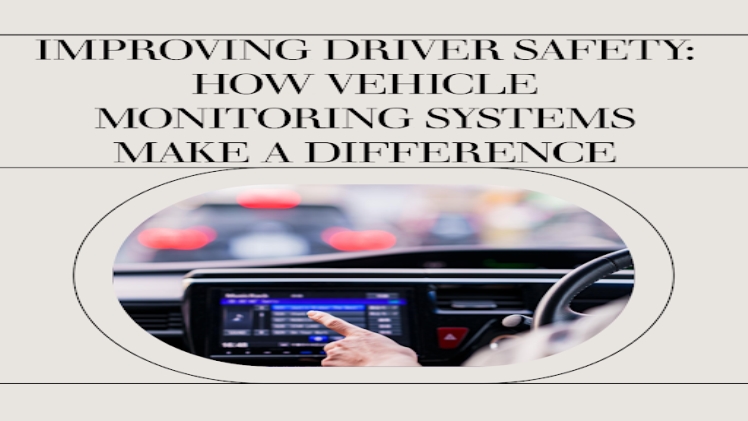Every company, regardless of its functions and services, must value the safety of its employees, especially drivers. Drivers are always at risk of road accidents caused by different factors, such as vehicle damage and other conditions. To keep the drivers safe, install driver monitoring systems such as GPS trackers and dash cams to monitor drivers and keep them safe.
Besides monitoring distance and live vehicle location, monitoring and tracking systems ensure your drivers are always safe on the road. It can be an integral system in monitoring and guaranteeing drivers’ safety and their duties. Tracking and monitoring systems have different features and capabilities to ensure the crew is safe. These features ensure a high-performance fleet, reducing chances of accidents, promoting safer driving practices, and ensuring safety.

1. Driver Behavior Monitoring
Tracking drivers’ behavior is essential to ensure they are safe while driving. A tracker will enable you to collect essential data such as braking and speeding. Dash cams provide you with real insight and live video into the cabin to ensure you monitor the driver for other behaviors, such as sleeping or under the influence of drugs while driving.
If the driver is constantly overspeeding and over-braking, these systems will notify you for instant action. This will enable you to save the driver from accidents caused by reckless driving behaviors.
All the data collected by tracking devices for vehicles are usually stored on the company system and cloud. You can generate monthly reports from the stored data to enable you to make subsequent decisions. Use the reports generated by data analytics tools to instill various regulations and rules to guide the drivers as they do their duties.

Analytics reports can be critical for developing newer training manuals to retrain the drivers and to ensure they have the best experience and safety guidelines. Data from their driving behavior can also be used to implement customized and personalized training to ensure they are all trained accordingly and effectively.
Other reports include comparative driver performance metrics. Fleet tracking and management systems enable you to collect data from all the drivers you hire. Therefore, you can create analytics reports that compare drivers’ behaviors on the road.
The reports or notifications from live feeds can also enable you to test for other conditions, such as drivers using drugs. After which, you can take disciplinary actions such as suspension or medical detoxification to ensure they abide by traffic rules related to driving when under the influence of drugs
Based on the reports, you can classify the drivers in terms of risks imposed, reward top performers and retrain those who show a significant risk of traffic violations or getting into an accident. You can also have various incentives aimed at boosting driver performance and activities.
The rewards for top performers will motivate others to emulate certain conduct on the road. You can also recommend punishments or further training to drivers with poor driving records. Set safety-related KPIs based on driving behavior to ensure all drivers commit to safety.
2. Vehicle Maintenance
Fleet management systems are essential for tracking vehicle maintenance and ensuring mechanics check the vehicles on time. It tracks the distance the vehicles cover, notifying about an upcoming maintenance schedule.
Regular maintenance and never missing any schedule are critical for drivers’ safety since all the components are up to date and working efficiently. This prevents issues such as loss of brakes or wear and tear that could lead to accidents. You can also set other parameters, such as the distance to be covered then the vehicle has to go for inspection on critical areas such as braking systems. You will get an alert whenever the vehicle nearly approaches the distance metric.
During the maintenance schedules, ensure the vehicles are properly checked, and all the necessary components are investigated. Based on the driving behavior monitoring systems, you can judge what components in the truck are at risk of wear and tear; hence they should be replaced fast and timely to avoid uncertainties.
3. Driver Work Scheduling
Monitor metrics such as distance covered and the number of hours driven. Also, ensure drivers have specific rules on the distance they should cover and then rest before proceeding with the journey. This prevents accidents caused by exhaustion and burnout.
Using the fleet tracking and management system, you can monitor the number of hours the driver was on wheels and then decide the number of days to take a break from work to recover and have sufficient rest. Also, introduce a login system connected to the tracking system.
The tracker will record the hours driven once the driver turns on their engines. It will also measure the hours when the engine was off, meaning the driver was resting or on a break. This data should be fed into the employee work scheduling system to ensure enough rest and that they do not work past the recommended hours.
Since the drivers will be logged into the system, they can easily get a notification that requires them to rest after covering a certain distance. Since every worker has to log into the system while they embark on their duties, you can easily prevent instances such as double shifts when one has to drive longer, increasing their risk of accidents.
Conclusion
Installing GPS trackers and dashcams would keep the drivers alert since they are constantly monitored and observed. You can also use the data collected from the dashcams and GPS trackers to create certain codes of conduct, rule, and regulations for drivers. These rules are critical to abide by traffic regulations, avoiding accidents, and ensuring that drivers are safe.

